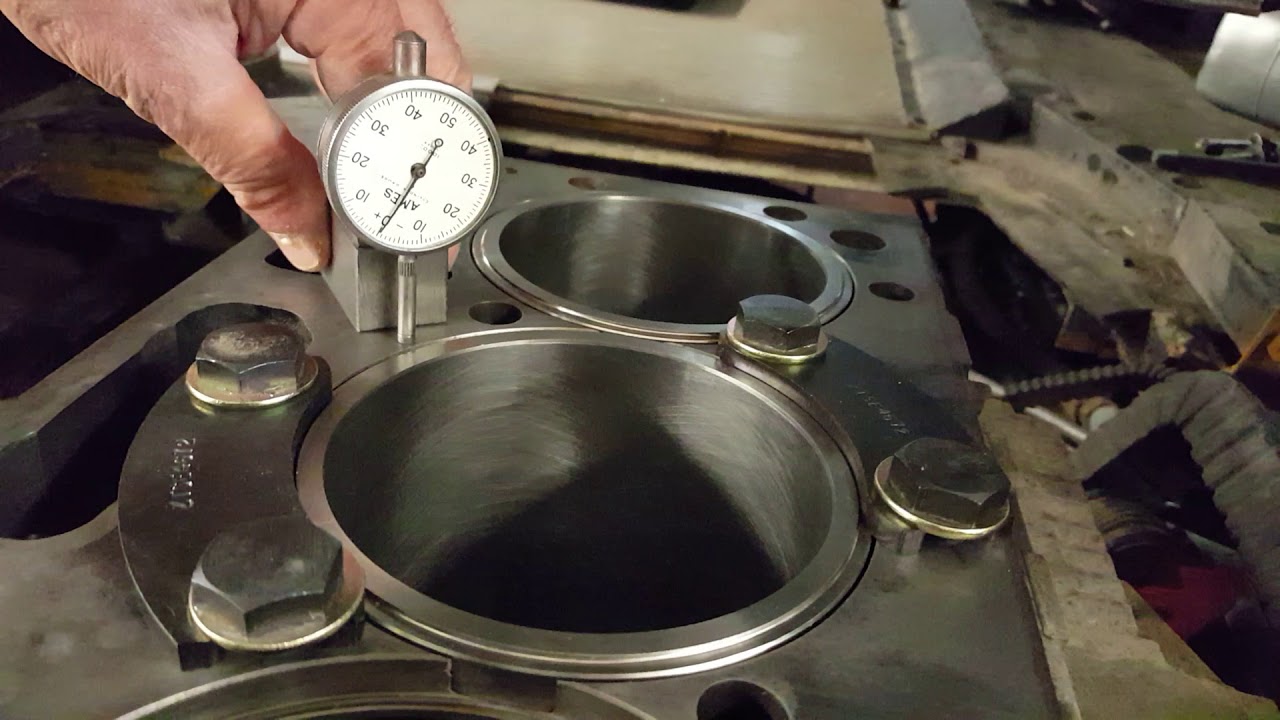The cylinder sleeves are the next step on this rebuild project. They have a rubber seal that goes around the outside to separate the coolant from the crankcase. Once lubricated each sleeve is forced into the block and counterbores. We purchased all of the necessary tools to carry out this job and cylinder sleeve hold downs are needed to measure the cylinder sleeve protrusion.
Seeing the tool a light bulb went off in my head that we could have manufactured this simple hold down device ourselves. However once the order went in it was too late since everything came from the U.S. It doesn’t matter they are the proper Navistar tools so they will pay for themselves since we’re doing the work in our shop.
The aftermarket rebuild kit was 2,000 dollars less than the dealer and I was very impressed with the high quality of the parts. The pistons, sleeves and bearings are all standard size so once we confirmed that we were in business. Once the cylinder sleeve hold downs were in place we measured each sleeve protrusion one at a time noting what the measurements were at each cylinder.
The protrusion is supposed to be 2 – 5 thousandths of an inch above the block deck. Our dial indicator was a little on the wobbly side and the measurements were erratic. Just to be safe I borrowed the dealer’s dial indicator and we were relieved to find out the cylinder sleeve protrusion were within the specs. There must not be more than a 1 thousandth of an inch difference between all of the sleeves which makes sense considering the head gasket has to have a nice even crush when torquing down the head bolts.
It’s a good thing we have the Navistar On Command website. With a user and password we can go in and enter the vehicle identification number. The master service literature section is excellent information with step by step procedures to properly disassemble and reassemble any engine they manufacture. I would never attempt an engine rebuild without the proper procedures and especially if I didn’t have the torque specs.
There have been 3 engines now with severe blowby and low compression on one cylinder which is always #6 with a worn out cylinder sleeve. The coolant contamination in the oil washes down the cylinder sleeve lubricating oil film so over time the damage is done permanently until the end users like us do a rebuild. One engine was caught during warranty but the latest 2 engines are past warranty.
The next step is the installation of the pistons and connecting rods which I will post here soon. I hope this information is helping you out if you’re a MaxxForce engine owner. I can’t stress enough for anyone who owns these diesels to get oil samples taken during servicing and get them checked out at the lab. Look for high potassium levels in other words coolant in the oil. Most likely the EGR cooler has failed and it must be changed asap! Before you’re stuck paying for an in-frame.







